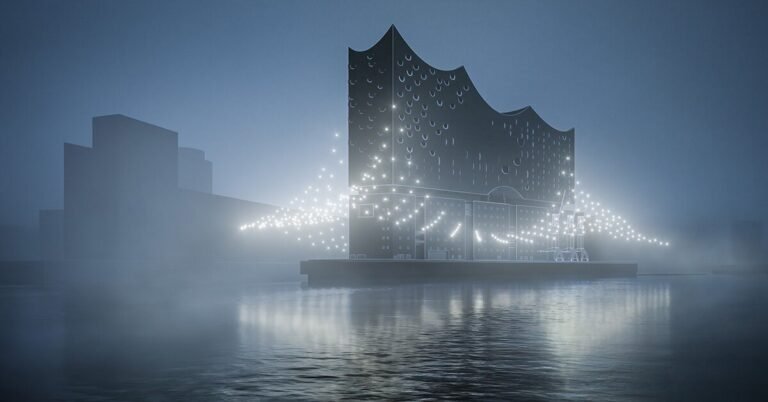Daily digest: RIBA announces Stirling Prize shortlist, MVRDV completes buildings in The Hague, and more
Happy Friday! In today’s edition of the daily digest New York’s failing infrastructure gets a passing grade, the RIBA releases the shortlist for its annual Stirling Prize, and other stories related to architecture, buildings, and design. Here is what you need to know as we head into another, hot and humid, weekend:
RIBA unveils 2022 Stirling Prize shortlist
Earlier this week, the Royal Institute of British Architects (RIBA) announced the six projects shortlisted for its prestigious Stirling Prize. This year, the prize placed community and climate-conscious design and construction at the forefront of its criteria. Four of the projects on the shortlist offer new spaces for community building and learning, from college campuses, to primary schools to community centers.
Additionally, RIBA Journal (published by the institute), shined a spotlight on 100 Liverpool Street by Hopkins Architects; the project is a transformative refurbishment of a 1980s office building and UK property company British Land’s first net zero carbon development, one that RIBA Journal hailed as “leading the pack of high ambition refurbs.”
Below is the complete list:
100 Liverpool Street, London, by Hopkins Architects;
Forth Valley College – Falkirk Campus,Scotland, by Reiach and Hall Architects;
Hackney New Primary School and 333 Kingsland Road, London, by Henley Halebrown;
Orchard Gardens, Elephant Park, London, by Panter Hudspith Architects;
Sands End Arts and Community Centre,London by Mae Architects;
The New Library, Magdalene College, Cambridge by Niall McLaughlin Architects.
The 2022 RIBA Stirling Prize winner will be announced in a few months on October 13.
Investigation finds that Pittsburgh property inspectors are housed in a hazardous building
The Pittsburgh Department of Permits, Licenses, and Inspections (PLI) is in charge of all things property and license maintenance. The municipal agency is currently housed in a crumbling building that would violate the very standards that they reinforce.
Although a number of city employees in the department work offsite, Pittsburgh’s Action News 4 reported that there are still a few dozen PLI workers in the Robin Civic Building, a 115-year-old Gothic building that looms over Ross Street. In addition to the crumbing brick and torn plaster, the city received a memo from the building manager, stating that “The condition of the heating system has created an unsafe condition at the building for both tenants and contractors.”
The memo was sent two months ago in May and despite being aware of the hazard, the city has not done any air quality testing (officials didn’t believe that the warning was a cause for concern) and has required employees to continue to work in the space—even the ones with respiratory issues, according to one city worker.
Locals don’t seem to be too pleased either.
“Typical hypocrisy, right? They go around telling you your building is not safe or whatever and they can’t keep their own things in check,” said local property owner Marc Brands to local news.
H/t to WTAE Pittburgh’s Action News
MVRDV completes a pair of two-toned residential buildings in The Hague
Dutch architecture firm MVRDV has completed the design of two residential towers in The Hague, Netherlands named Grotius Towers. While the bodies of the buildings are relatively straight their tops appear to “crumble” with setbacks and terraces located at varying heights. When viewed from different perspectives the buildings’ shapes and forms morph.
The faces are wrapped in a natural stone and bamboo composite, which changes color as the buildings rise, with gray tones at the base and shades of tan on the upper parts.
Grotius Towers occupies a tight footprint, an existing roadway cuts through the site, yet the architects were still able to create new squares around the buildings, offering connectivity to nearby public transit.
The sizes of the apartments vary, as do the price points, MVRDV said 114 units of the 655 are allocated for social rent. Each of the units has its own dedicated outdoor space, with expansive terraces located on the upper floors, formed by the series of stacked setbacks. In addition to the outdoor space the buildings offer residents a number of sustainably-minded features, including 1,500 bike parking spaces and a robust heat recovery system. Residents will also have access to an app for connecting with other building occupants.
“The ‘village’ at the top literally crowns the design. In addition to the view, this stack of terraces also allows easy encounters between residents,” said MVRDV Founding Partner Winy Maas. “The design makes your neighbours more approachable; tenants will soon feel as if they live on the ground floor, casually inviting each other for a glass of wine or dinner.”
Loeb Boathouse to close in October 2022
The Loeb Boathouse in Central Park survived the pandemic—only to be bested by inflation. The iconic restaurant, famous for its picturesque lake-side views and a number of film cameos (season three of Sex and the City), will serve its last round of indulgent brunches and Venetian gondola rides before closing its doors on October 16.
The restaurant had been back in operation for a little over a year after reopening in March 2021; last week, Dean J. Poll filed paperwork, notifying the city of the establishment’s closing and the 163 employees that will be laid off. In the notice, Poll stated that the closure was “[d]ue to rising labor and costs of goods.”
However, the establishment’s closing may not mean an indefinite end for the charming boathouse. The city’s Department of Parks and Recreation spokeswoman Crystal Howard told the New York Times in an email statement that the agency plans to find a replacement for Loeb “as soon as possible.”
New York’s infrastructure receives an overall grade of C from the ASCE
Infrastructure grades are in for the state of New York: The state received an overall grade of C from the New York chapter of the American Society of Civil Engineers (ASCE). For comparison, Illinois received a C- on this year’s infrastructure report card and America at large received a C- in 2021.
On the A-F grading scale, with A given to infrastructure in excellent condition and an F given to infrastructure in unacceptable condition, a C (which the ASCE labels as “mediocre”), indicates that the state’s infrastructure is in fair to good condition, but needs attention to mitigate the increasing vulnerability to risk.
The overall grade is an average of grades in eleven total categories, from aviation and bridges to transit and solid waste. Among New York’s shining moments are its management of public parks and solid waste—both categories received B- ’s, the highest grade in the lot for New York. According to the ASCE, New York’s grades fall lowest in the roads and transit categories, which received D+’s.
With the report card, the ASCE also made sure to leave suggestions for improvement: make an effort to generate long-term funding, reassess infrastructure goals to account for post-pandemic and climate change–related changes in living patterns, change policies to allow for the testing of new building materials and methods, and expand technical training and STEM programing for both current workers and future generations.


